Please
Recent Updates
- Public Consultation on Developing a Market Management System for... | Event Announcements | community outreach, projects | 14/11/18
- Some reasons why you shouldn't burn up your Money this Diwali | Other Documents | campaigns | 07/11/18
- Peoples Movements, Networks, Academicians, Researchers and Civil... | Press Releases | campaigns, biodiversity, tree felling, hasiru usiru | 06/11/18
- Following protest, Karnataka Forest Department Cancels Workshop to... | Press Releases | campaigns, biodiversity, tree felling, hasiru usiru | 02/11/18
- A Review of Andhra Pradesh's Climate Resilient Zero Budget... | Press Releases | community outreach, campaigns, biodiversity, publications, brinjal | 18/10/18
Deconstructing notions of 'science capital' and 'world class city' in the context of Bangalore and the proposed 'science city' in Challakere
Report of a conversation with Prof. Sheila Jasanoff, Pforzheimer Professor of Science and Technology Studies Director, Program on Science, Technology and Society Harvard Kennedy School John F. Kennedy School of Government

Report of the conversation with
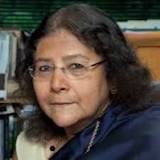
Prof. Sheila Jasanoff
Pforzheimer Professor of Science and Technology Studies
Director, Program on Science, Technology and Society
Harvard Kennedy School
John F. Kennedy School of Government
Thursday, 16th March, 2017,
3 pm – 5.30 pm
@ ESG - Workshop Space,
1575, Ring Road,
Banashankari II Stage,
Bangalore, 560070
Map: https://goo.gl/maps/AaagER4QcaB2
Science in the City: Bangalore and Citizen Expertise in Urban Development
A Report of the Conversation
If Michel Foucault had written about India, he might have touched on the theme of the Enlightenment prison from his classic work Surveiller et punir (Discipline and Punish). At least the French philosopher and sociologist would have resonated with this theme in a discussion at the ESG with the Harvard scholar and leading figure in Science, Technology and Society (STS), Professor Sheila Jasanoff. Like Foucault before her, Jasanoff addresses the nature of Enlightenment in an age when knowledge, articulated through the institutions of science and technology, serves everywhere as an instrument of power. Professor Jasanoff herself observed following over two hours of exchange, “I have a strong sense of the Enlightenment having produced its own counter-movement and here is a group of … massively Enlightened [people] looking for … magical re-enchantment.” This “magical” world that Jasanoff gathered from the participant’s responses was one “where local knowledge thrived, they lived more closely with nature, or they knew what nature was, [where] education really educated, [and] people didn’t get riven by class structures.” Yet, as she observed, “there is no magic.”
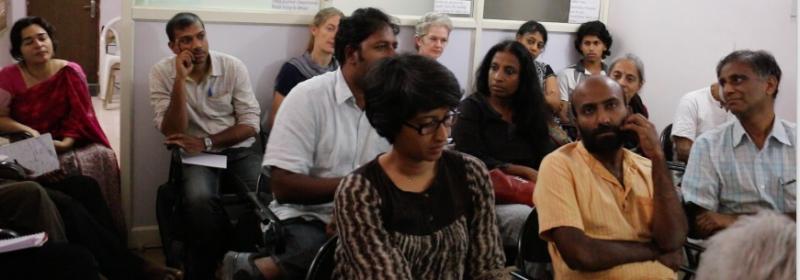
What magic does exist, Jasanoff pointed out, exists because people make it—often despite the institutions that surround them. The discussion itself was emblematic of this idea, as many had travelled as much as three hours on Bangalore’s congested roads to discuss the role of science in the city. One participant suggested quite explicitly that it was “purpose, and not much else” that was a reason for attendance. This hopeful sky often felt darkened by the clouds of a vision of science described by Foucault, where he sees Enlightenment as prison. In his work Foucault called this prison a “panopticon,” borrowing Jeremy Bentham’s famous name for his architectural drawings of a prison with a central guard tower surveilling an outer ring of prison cells. In Foucault’s mind the panoptic Enlightened gaze allowed for new modes of exercising power: where authority uses its knowledge to centralize power; where education disciplines and standardizes minds; and where technological infrastructures lead to prediction and control. Each of these themes was touched upon by session participants, who described science and technology in India and the city of Bangalore in just such controlling terms. But it was in encountering the challenges in India, and the darker possibilities for science, that it became possible to imagine different futures and ecologies for the ‘science city’ of Bangalore.
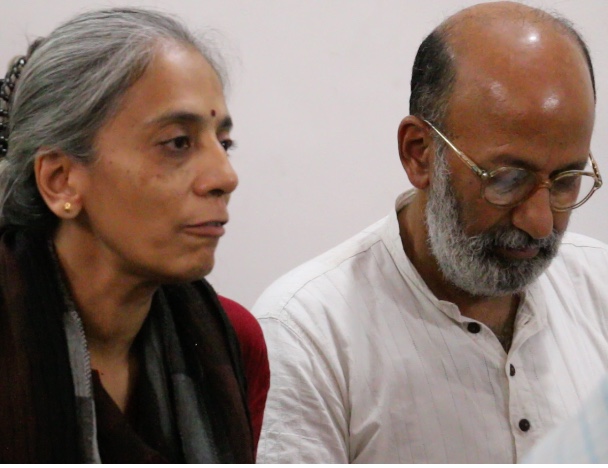
That the metaphor of the Enlightenment prison was a live theme of the discussion was deeply fascinating. The theme emerged immediately, from the discussion’s introduction with a video clip of an Al Jazeera report1 on the ‘science park’ near the village of Challakere 200 km north of Bangalore. There a number of projects that are nearing completion: a large weaponised drone testing site by Defense Research Development Organisation, a nuclear enrichment facility by Bhabha Atomic Research Centre, a 1000-acre solar park by private Sagitaur, a synchrotron for a satellite campus of the Indian Institute of Science in Bangalore, and a space application centre of the Indian Space Research Organisation. Thousands of meters of cement wall and barbwire have been laid out. Watchtowers with guards mark every few hundred feet along the perimeter of certain of the park’s sections. This 10,000 acres of grassland was earlier used by local population to fgraze their cattle, and is also a site of great cultural and religious importance. Besides, it is a major watershed that replenishes the region's groundwater and lakes. Today, in the name of ‘science’ as Leo Saldanha described it, these lands are being walled off by the government, imprisoning and even killing nature. As described in the video, a drought in recent years has already led to local wells drying up, agriculture failures, and lost livelihoods. Local herders have recently resorted to using fodder that in one graphic account is making cows tongues bleed as herders displaced from their usual shelters faint from heatstroke. The walls being built by the IISc and the Government of India have blocked off lakes and streams — water sources now more critical than ever for the survival of the local community. These lands are seen as ample grounds for the development of prestigious state science, far away from the prying eyes of Pakistan, and perhaps more importantly, the Bangalore media. The drones themselves will reportedly be used for internal surveillance of India by the government.
Suprabha Seshan, a conservationist, offered an equally dark account, describing how a ‘science based’ conservation in India has fractured and displaced its societies, creating bounded enclaves that wall off people and places. “We prioritize certain zones, certain people [saying that] ‘they have 25 percentage more biodiversity than this place’ or some other zone is prized for being the home of whatever, whichever community, whichever rock, whichever stream.” In Bangalore especially, she said, the unsustainability of the city has meant that the hinterland has been carved up so that “this population over here can sit on a nice skyscraper.” “What is going on here [is] that a bunch of people sitting inside the IISc, or wherever, decide that this should happen,” she charged. These are not “innocent scientists who are ‘objectively measuring these areas that must be conserved for the ‘Greater Common Good.’” They are merely part of the “political forces of migration, and bad politics, and corporatization of the last places in the world—served by science, I feel.”
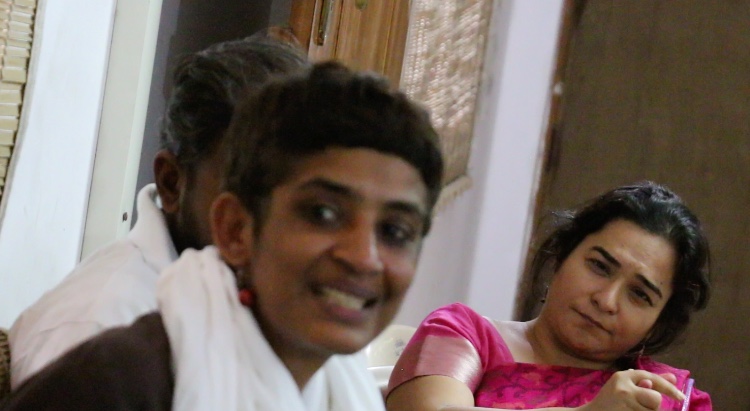 To resist this kind of divisive science, Tara Krishnaswamy of Citizens for Bengaluru said, requires a renewed commitment to the people as a “pillar of the nation,” not the state. NGO’s have been complicit in part because they are dependent upon the state, imprisoned by its very largesse. This funding from the government dictates what they can and cannot do, including organizing and coordinating together against centralized power. This prevents the people from doing work to look after their own water bodies and environment. N. S. Mukunda of Citizens Action Forum agreed, describing the mindset of bureaucrats as trying to do as the colonists had done, by replacing local knowledge with huge projects and a “centralized system.” He recalled the colonial projects like Sir Arthur Cotton’s construction of irrigation canals in Andhra Pradesh that destroyed indigenous water systems.
To resist this kind of divisive science, Tara Krishnaswamy of Citizens for Bengaluru said, requires a renewed commitment to the people as a “pillar of the nation,” not the state. NGO’s have been complicit in part because they are dependent upon the state, imprisoned by its very largesse. This funding from the government dictates what they can and cannot do, including organizing and coordinating together against centralized power. This prevents the people from doing work to look after their own water bodies and environment. N. S. Mukunda of Citizens Action Forum agreed, describing the mindset of bureaucrats as trying to do as the colonists had done, by replacing local knowledge with huge projects and a “centralized system.” He recalled the colonial projects like Sir Arthur Cotton’s construction of irrigation canals in Andhra Pradesh that destroyed indigenous water systems.
The institutional mindset of science, Professor Jasanoff agreed, is especially pernicious in that it can stifle and stamp out creativity to resist. Yet although much of the work of resistance, of building alternative structures that stand against subservience, is against the odds, not carrying out this work is the “surest” way to end the resistance. She did point to some success stories as well. The Center for Science and Environment in Delhi, active since the late 1970s, has been one valuable repository for local knowledge. Where Foucault’s vision of modernization is totalizing, Jasanoff cited Meera Subramanian’s book A River Runs Again2 as full of counterexamples of successful indigenous water management schemes. Even knowledge that is lost to the past as a result of colonization and huge projects can be regained. Jasanoff pointed out that the ancient Romans used to make intricate and sophisticated bronze sculptures using a technique that was lost for hundreds of years. Still, it was later relearned. The question, for Jasanoff, is not one of optimism or pessimism, but conviction. She cautioned against being “naïve about the difficulties,” and said that when the problem was in water, nuclear, or biodiversity the solution might be different for different areas. Fighting nuclear power might be much harder than finding new approaches to water harvesting, which serves a basic need.
Problems of knowledge and expertise were linked especially to education, Sandeep Anirudhan sadly remarked that today he sees India putting its kids in prisons “disconnected from their environment, disconnected from any reality, disconnected from our local community, … our administrative infrastructure, our politics.” The “reality of our times,” he went on to say, is one that will only continue to produce exploitation: “money centered businessmen,” and the same sort of “useless” officials that are responsible for the problem of disconnection with people and their problems. Many others agreed that in India the politicians are serving the interests of business before that of the community. Brinda, who teaches urban planning, said that citizen activists are no longer as active in their communities as they once were. She stated that in electoral politics problems arise because people will vote for things they think will win rather than supporting politicians or causes that they independently choose on their merits. The official knowledge of schooling is as yet inadequate to teaching students local knowledge, about their local environment, or the politics of their country. In India, as this participant put it, the resonance is part of the “aftermath of colonialism” and a culture where Indians “don’t get informed” and “don’t get culture to question.”
Professor Jasanoff resisted, “I kind of rebel against saying, ‘this is accepted in our country’ because I suspect it is a little more complicated than that.” Against Foucault’s inevitabilist vision she began her response by saying, “some of the greatest poetry has been written out of prisons … there are literal prisons out of which people have written as well, and many of the great independence tracts have been written in prisons.” Jasanoff reminded the crowd, “the question is where this human spirit goes … having raised children I don’t think they learn everything that they have to learn at school at all.” Many described India in terms of the things it lacks, including the sort of political culture allegedly present in the United States. Jasanoff diverged sharply, insisting that in India, “there is nothing lacking in terms of intellectualism, in terms of ideas, in terms of vibrancy, in terms of aesthetic, spirit, animation.” This idea of lacking in these respects, “just doesn’t make sense. I mean why doesn’t it express itself in more profound ways, and in more collective ways, and in more powerful ways? That is a genuine question.” India is invisible to many in America, she noted, and yet Bangalore has grabbed the attention of multinational businesses like Google, Microsoft, and Siemens. Going beyond the participant’s prison metaphor, she asked about what is locked out as much as locked in. What is needed, she argued, is an ability to better analyze why in places like Bangalore one sees a certain elite class of technologists coming in, and how the background conditions are created that are allowing certain ecosystems and developments in India to become possible or not.
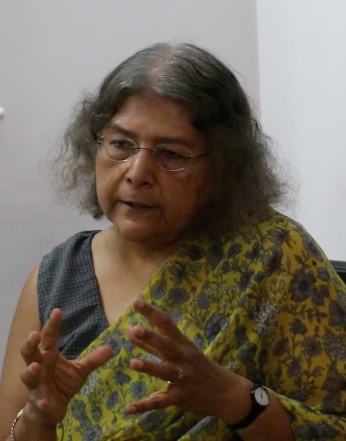
Even as some shared Foucault’s image of knowledge as centralizing an ‘all-knowing’ authority of state power, there were a few others who spoke in favor of the scientist as providing resistance. Scientists, in the words of Sumetee Pahwa Gajjar of IIHS, have been part of the cohort of people looking at and studying the “scale of the entire city.” “The lakes are disappearing, it affects groundwater charges and affects people very much around the lakes who may not have access to water otherwise,” she observed. While agreeing that there were underlying problems of politics—structural inequalities, political games, and corporate interest—she was hopeful that science itself could provide a narrative, whether through ‘sustainability’ or ‘climate change,’ that can capture all of the stories of change happening in the city. Science, she said, is work that “gets the most conversation going.” And against the implicit idea of a unified ‘science park’ or ‘science city,’ she said that science is highly divided. “Social scientists…would often say we won’t agree with the environmental scientists or national scientists,” she observed, and one problem is that scientists are a symptom of cleavages that have long defined the city of Bangalore. In her view, this possibly compounds the city’s problems.
The group generally turned the question of what science is or does to a question of the scientist or ‘expert.’ Many pointed out that all expertise is ‘elite.’ Even at this discussion, Kshitij Urs of Action Aid pointed out, there were no slum dwellers or working class people. To what extent did the composition at the ESG reflect the interests of the ‘people’ or did it display some of the same problems of constraint and lock-in that, in Foucault’s vision, people were seeing in government science? While scientists are possibly more divided than one might first assume, they always reflect small group of the same people claiming to make knowledge for an entire population. Between claims of scientific fragmentation and the monolithic and centralizing character of expert knowledge, the participants presented a more complex view of scientific
Enlightenment then seen in Foucault’s account of prison with a single, centralizing, panoptic gaze. For one thing, people pointed out, there is role playing that is involved. Architect Sathya Prakash Varanasi described an urban government that appears divided into four competing groups who have no commitment to working together: experts, who don’t have administrative powers; administrators, who don’t feel answerable to people; people who can demand responsibility from politicians; and politicians who are supposed to be answerable to people. Perhaps the problem of fragmentation is a result of the flaws built into assumptions about these roles. Very few politicians come in with a proactive mindset to resolve problems and conflicts. Experts have done little to build bridges for collaboration, including those at the ESG who have taken an aggressive stance without considering how to create a “common denominator” for participation. Separately the politicians who are simply seeking to hold onto power turn away participation because they fear “opposition more than participation,” a stance partly justified by the aggressive positions of dissenting expert groups.

People throughout the discussion emphasized the role of communication in science. Some stated that this communication needed to be improved. In the analysis of “role playing” above, communication was seen as fundamental in promoting a “common denominator” for collaboration. On the other hand, Srinivas Alavalli stated quite critically that what Enlightened people do not understand well is precisely what the “politicians understand very well, and that the media understand very well: which is communicate the issues in such a way, obfuscate or create hype around things so that it is sold nice. Smart city is sold superbly. Aadhaar is sold superbly.”
In response Professor Jasanoff said that, “if you come from a critical studies of science and technology [background] you would say that that word communication always carries a little bit of a question mark associated with it. What gives the person doing the communication a right to communicate to the others? What is being assumed there in the first place? And maybe what’s required is something more like what you were saying about the class structures and whose voices are being heard, and therefore attentiveness to the two-wayness of the communication process, and not the unidirectional ‘who’s going to inform whom about what’.” Drawing across these accounts Jasanoff also wanted to put in a “good word for the scientists” as many environmental social movements in India and in the U.S. “got off the ground because there were scientists who were prepared to lend an alternative view.” The roles, in other words, can change and experts come in many forms, holding disparate values. She cited the examples of ecologists in the U.S. being able to open up studies of water run-off from nuclear plants, inspiring the anti-nuclear movement in that country, and of many administrators whose experience “inside the belly of the beast” had helped them to work with “resistant groups outside.”
Using the technology of a prison as a metaphor, Foucault argued that power could be manifested through the very infrastructure of the built environment. At the national level many were troubled that the entire nation has been profiled and “bio-profiled,” justified through a narrative one man attributed to Western scientists who think it a source of pride for India to have Aadhaar as a sort of “alternative internet.” This search for national scientific legitimacy at the expense of dissenting voices was apparent especially in the ‘science park’ example of Challakere, where 300,000 people were denied access to lakes and grazing pastures by the presence of massive wall. About six or eight lakes dried up because of the dam built by the IISc on their satellite campus.
In Bangalore different problems were related. One man’s security guard walks 5 km every day because bus tickets to his job are too expensive to afford. Leo Saldanha observed how, after working over a year in making a reports for the state government on the state of environmental governance, key bureaucrats would refuse to publish the scientific results because they might sully the reputations of the powerful. Saldanha pointed out that some especially questionable physical infrastructures had been examined, including radioactive facilities in Bangalore, a Shell refinery that is allowed to operate within the limits of Electronic City, and Biocon facilities that are able to pump potentially biohazardous waste out onto municipal streets. (He also mentioned, at this same facility, hundreds of people are experimented upon with little government oversight.)
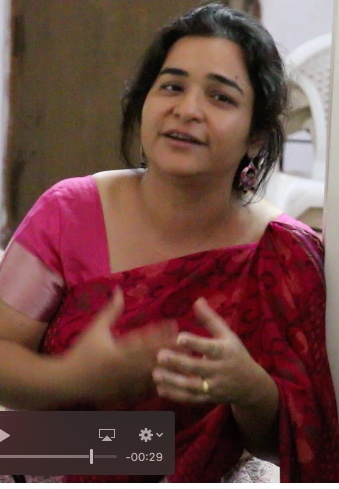
These examples demonstrate that ‘science’ is often deployed asymmetrically: used at times by governments to justify their interventions while repressed at others when there is dissenting expertise. For the ‘Enlightened’ individuals in the room, some felt resistance was at times futile, “I resisted getting Aadhar card for a while … I finally got one because there was something that could not be done without it.” Given what Professor Jasanoff called the “pressures of modernity” (two working parents, a 24-hour clock), a participant felt that the shortage of time and need to work meant that less than “1% of time” could be spent thinking about politics and governance—a luxury that experts like those gathered at the ESG, it was implied, could afford.
Yet with the steel flyover, Tara Krishnaswamy insisted, there is great promise and reason for hope. “Nearly 90-95% of the people who came out were protesting for the first time,” she pointed out. While this is not perfect, she saw this as a step toward a greater civic consciousness, defying the prison of modernity, even if not a movement that is ready to mobilize against nuclear facilities in a distant community. Carol Upadhya of National Institute of Advanced Studies spoke of such civic responses as emanating from the organised classes, and that there is much to do for those who engage with such issues to strike out and create linkages with other politically powerful responses, seemingly unorganised, but actually they are, such as the 'flash' strike of the garment workers last year to government interference with their financial securities, which brought the city to a standstill for two days.
If Foucault’s sense of infrastructure is totalizing in its pessimism, Jasanoff countered with the conviction that resistance to infrastructures like the steel flyover can function as “symbolic bearers of a set of statements that citizens are making about their environment.” Such symbols, she argued, can have lasting significance. For instance, she thought of how these “parables or fables of modernity,” can become the very “Ramayanas and Mahabharatas” that provide the material for progressive counter-narratives, resistance, even magic. “These construction projects have value in a different sense: they are usually imagining a kind of future,” she said. Through fragmentation there is opportunity: “maybe in Bangalore you’re in a different moment, a moment where there is a possibility for writing a different future history from the history that has been past.” “And it’s not just Bangalore that’s divided, it’s the world that’s divided,” Jasanoff pointed out.
The discussion provided hope that Bangalore is not stuck in Foucault’s most pessimistic vision of science and technology. It did as much, however, illuminate the ways that such a vision is part of a very present and real tendency of scientific politics and political self-expression in the Indian context today. Rather than countenancing sweeping ideological changes that would reverse this trend, Jasanoff insisted that incremental changes are possible. There is no ‘innocent’ expert assessment, and a critical examination of these problems is needed. Somehow, in India, systematic scientific work “dedicated to understanding the connections between the dominant structures of social ordering and power, and the sciences and technologies that come of them” is strangely lacking. One area where the middle class might lobby for, rather than be inimical to, the causes of social justice would be to agitate for more environmental education, history of science, philosophy of science, and STS. Resisting defeatism, she concluded:
One of the things … I’ll carry away from these conversations is a phrase that Leo uttered before, which is the ‘Khan market consensus’…But maybe we should create the Khan market dis-sensus and try to light the fire under the different opinions of how to do things in this room, based on the experiences that are here, and ourselves cultivate a spirit of ecological diversity in the ways we think.
In a global moment of division, India’s strength is its diversity: an ecology that resist Foucault’s monolithic vision of science and technology and through which imagining alternatives becomes possible. It is fitting that Jasanoff left the room to examine the differing opinions expressed at the meeting rather than by presenting some ‘all-knowing’ position—a better thing, in Jasanoff’s view, than “assuming that I have a silver bullet solution, which I don’t.”
1Entitled “India's Nuclear Riddle”, the film was telecast on 1st September 2016 and can be accessed at: http://www.aljazeera.com/programmes/peopleandpower/2016/08/india-nuclear-riddle-160831143938805.html
2More details of Meera Subramanian’s, “A River Runs Again”, may be accessed at: http://meerasub.org/book/
Sheila Jasanoff is Pforzheimer Professor of Science and Technology Studies at the Harvard Kennedy School. A pioneer in her field, she has authored more than 120 articles and chapters and is author or editor of more than 15 books, including The Fifth Branch, Science at the Bar, Designs on Nature, and The Ethics of Invention. Her work explores the role of science and technology in the law, politics, and policy of modern democracies, with particular attention to the nature of public reason. She was founding chair of the STS Department at Cornell University and has held distinguished visiting appointments in the US, Europe, and Japan. Jasanoff served on the Board of Directors of the American Association for the Advancement of Science and as President of the Society for Social Studies of Science. She has received a Guggenheim Fellowship, the Sarton Chair of the University of Ghent, and an Ehrenkreuz from the Government of Austria. She holds AB, JD, and PhD degrees from Harvard, and an honorary doctorate from the University of Twente.
Background Note:
Bangalore is imagined as India's 'science capital', 'silicon valley', and as an aspiring 'world class city'. Uncritical acceptance of such imaginations determine pathways of development that are steeped to favour those with agency, capital and access to political power. As the State increasingly surrenders its Constitutional responsibilities in shaping policies that are socially and politically inclusive, cities like Bangalore are fast turning into highly divided metropolises guided by processes of financialisation of land, services and other resources. Public investments in “high tech” sectors flows freely, as investment in housing, health and social services for working classes and the poor diminishes rapidly. Despite such skewed choices disadvantaging millions, such models of development are being propagated nation-wide with 'High-tech' 'high-speed' industrial corridors linking Bangalore, Chennai, Mumbai, Delhi, Hyderabad, etc., peppered, as they are in recent years, with 'smart cities' that are being championed with nationalistic fervour.
While demands for democratisation of decision-making are increasing, these are limited largely to project-driven local concerns and impacts. On the rare instance when the State takes initiative in submitting a technological choice to public debate, as was the case with the proposal to introduce GMO food crops in India, the public has engaged with an heightened sense of social responsibility, and the outcome has been a choice widely regarded as mature. It is desirable that such practices become systemic to public decision making, particularly in cities, so that they may truly become urbs of inventiveness with inclusivity. But a State wary about losing investments, makes such democratic choices extremely difficult, if not impossible, thus gentrification is the outcome. Corporates and science and tech establishments rarely step out in support of democratic decision-making, be it in the shaping of a city, or in envisaging the pathways for science and tech development in India.
This is clearly evident in Challakere, Chitradurga, projected as India's 'science city'. Here, large swathes of pristine community conserved grasslands, that supported tens of pastoral and farming communities, have been diverted for a massive military-industrial-nuclear complex. Basic notions of Constitutional accountability and protection of human rights have been thrown to the winds on the claim that such 'sacrifices' are warranted for the 'security of the nation'. And there is rarely reportage of the calamitous consequences that local communities are bearing.
In our conversations with Prof. Jasanoff, these and other issues were broached to understand what such events and developments would mean for the futures of the Bangalore region.

